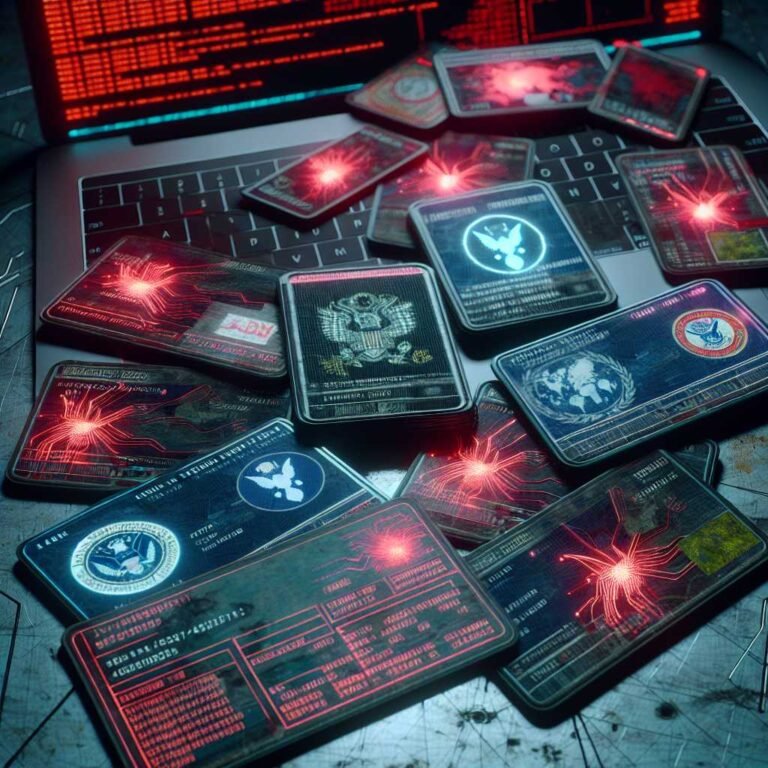Cybersecurity Incident Response Playbook: A Step‑By‑Step Guide to Detect, Contain, and Recover Fast
If your phone buzzed right now with an alert—unusual login, encrypted files, suspicious data exfiltration—what would you do in the next 15 minutes? In cybersecurity, those first moves decide whether you experience a contained incident or a full-blown crisis. That’s why a strong, tested incident response playbook is your best defense when—not if—something goes wrong.
In this guide, I’ll walk you through a practical, NIST‑aligned incident response playbook you can use today. You’ll get clear steps, checklists, roles, legal and communication frameworks, and mini‑runbooks for ransomware, phishing, insider threats, and more. It’s written for security teams, IT leaders, and anyone tasked with protecting critical assets and keeping the business running.
Here’s the heart of it: speed and clarity beat chaos and guesswork. Let’s build both.
What Is a Cybersecurity Incident Response Playbook?
A cybersecurity incident response playbook is a predefined, step-by-step plan for detecting, triaging, containing, eradicating, and recovering from cyber incidents. It gives your team the exact actions, decision points, owners, and timelines—so you can act confidently under pressure.
Most effective playbooks align to recognized frameworks like: – NIST Computer Security Incident Handling Guide (SP 800‑61 Rev. 2) NIST Guide – SANS PICERL methodology SANS Incident Handlers Handbook – NIST Cybersecurity Framework 2.0 NIST CSF 2.0 – MITRE ATT&CK knowledge base for adversary behaviors MITRE ATT&CK – CISA guidance and alerts CISA Incident Response
Why that matters: using common models reduces confusion, shortens training time, and helps with compliance and audits.
The 6 Core Incident Response Phases (NIST‑Aligned)
The flow is simple on paper and challenging in practice. Here’s the structure and what to do in each step.
1) Preparation: Your Pre‑Incident Checklist
The best time to win an incident is before it starts. Preparation is your multiplier.
Build and test: – Policies and scope: Define “event” vs. “incident,” severity levels, and escalation paths. – Team and roles: Assign an Incident Commander, SOC lead, forensics, IT ops, legal, PR/communications, HR, privacy, executive sponsor, and vendor/MSSP contacts. – Tools: SIEM/XDR/EDR, SOAR automation, ticketing, secure comms (e.g., out‑of‑band chat), forensic imaging, vulnerability management, and threat intel. – Visibility: Asset inventory, critical systems map, data flow diagrams, log sources, and retention standards. – Backups: Immutable/offline backups, restore tests, and documented RTO/RPO. – Access controls: MFA, least privilege, break‑glass accounts, PAM. – Legal/compliance: Map breach notification obligations (GDPR, HIPAA, state laws, SEC) with timelines and decision criteria. Keep outside counsel on retainer. – Playbooks and runbooks: Specific workflows for ransomware, BEC/phishing, insider threats, DDoS, and supply chain compromise. – Exercises: Tabletop scenarios and red team simulations at least twice a year. – Communication plan: Stakeholder lists, media holding statements, regulator contacts, law enforcement (FBI/IC3). – Chain of custody and evidence handling forms.
Helpful resources: – CISA Incident Response Guidance – NIST SP 800‑61
Quick win: Print a one‑page escalation matrix with pager/phone numbers. When time matters, scrolling through a wiki is painful.
2) Identification: Detect, Triage, Verify
The goal here: confirm the incident, understand scope, assign severity.
Primary detection sources: – SIEM/XDR alerts, EDR detections, IDS/IPS events, UEBA anomalies – Cloud security alerts (e.g., unusual OAuth grants, impossible travel) – Third‑party notifications (vendors, partners, law enforcement) – User reports and helpdesk tickets
Triage in 10–30 minutes: – Validate alert fidelity. Look for corroborating signals and known indicators. – Capture evidence early. Take memory dumps if relevant; snapshot VMs; collect logs. – Assign severity. Use impact + likelihood + spread potential. Predefine levels (Sev 1–4). – Decide on activation. Escalate to the Incident Commander if criteria match.
Avoid common traps: – Don’t dismiss “weird” user reports. Many breaches start small. – Don’t destroy evidence by reimaging too soon. Preserve first, remediate second.
Pro tip: Track MTTD (mean time to detect). It’s your early‑warning KPI.
3) Containment: Stop the Bleeding
Short‑term containment: – Isolate compromised hosts from the network. Prefer network isolation over powering off to preserve volatile evidence. – Revoke or rotate suspected credentials and tokens. – Block known indicators (domains, IPs, hashes) at firewalls and email gateways. – Disable malicious automation (e.g., rogue scripts, scheduled tasks).
Long‑term containment: – Segment affected subnets. – Stand up clean management networks. – Implement temporary rules to prevent reinfection while you prepare eradication.
Balance is key. Contain fast, but don’t tip off the adversary too early if you’re tracking exfiltration. Here’s why that matters: premature blocking can push attackers to accelerate or pivot.
4) Eradication: Remove the Adversary and Artifacts
Now you eliminate root causes and backdoors: – Patch exploited vulnerabilities; update EDR sensors and OS. – Remove malware, web shells, and persistence mechanisms (startup entries, scheduled tasks, registry keys, cloud app consents). – Reset passwords and rotate keys/secrets. Consider tenant‑wide password resets after credential compromise. – Hunt across the environment for the same TTPs using MITRE ATT&CK techniques. – Validate with clean scans before recovery.
Remember: eradication without understanding the initial vector invites repeat incidents.
5) Recovery: Restore Safely and Monitor Closely
Bring systems back in a controlled, phased way: – Restore from known‑good, offline or immutable backups. – Prioritize critical services based on business impact. – Monitor for re‑infection: enhanced logging, EDR watchlists, canary accounts. – Validate data integrity and application functionality with the business owners. – Schedule go‑live windows and define rollback plans.
KPIs to watch: Time to contain, time to recover (MTTR), and post‑recovery incident rates.
6) Post‑Incident: Learn, Improve, Report
Close the loop with a blameless, detailed review: – Build a timeline: initial foothold, lateral movement, exfiltration, detection, response. – Root Cause Analysis (RCA): map to ATT&CK and identify control gaps. – Update playbooks and controls: patches, network segmentation, EDR policies, MFA. – Train on lessons learned. Convert “gotchas” into checklists. – Report to leadership and, if required, regulators and affected individuals.
Relevant guidance: – NIST CSF 2.0 – CISA Reporting and Alerts
Roles and Responsibilities: Who Does What, When
During a crisis, ambiguity kills time. Use a clear RACI-style model.
Core roles: – Incident Commander (IC): Owns decisions, priorities, timelines, and status. One voice. – SOC Lead/Analysts: Detection, triage, containment actions, logging, evidence collection. – Forensics Lead: Chain of custody, imaging, memory analysis, timeline building. – IT Operations: Systems isolation, patching, restore, network changes. – Security Engineering: Tool tuning, detections, hardening, identity and key rotations. – Legal and Privacy: Regulatory assessments, privilege, law enforcement coordination. – Communications/PR: Internal and external messaging; media holding statements. – HR: If employee conduct is involved; manages employee communications. – Vendor/MSSP/Insurer: Contractual support, breach coaches, negotiation guidance. – Executive Sponsor/Crisis Management: Business decisions, budget approvals, risk tradeoffs. – Data Protection Officer (if applicable): GDPR obligations and documentation.
War room best practices: – Use out‑of‑band comms (secure chat, dial‑in line) in case email is compromised. – Time‑box updates (e.g., every 30–60 minutes). – Track tasks in a central ticket or board with owners and due times. – Keep a running situation report (“SITREP”) for leadership.
Communication and Legal Frameworks You Can Use Under Fire
Clear, timely communication prevents secondary damage. Legal alignment reduces regulatory risk.
Internal communications: – Notify execs early with facts, not speculation. – Provide the helpdesk with approved talking points and steps for user reports. – Keep teams informed on isolation, password resets, and service impacts.
External and legal: – Preserve privilege. Engage outside counsel early to guide investigations and communications. – Law enforcement: For significant incidents (ransomware, BEC, critical infrastructure), contact the FBI/IC3 Report at IC3. CISA can also assist. – Breach notifications: Understand jurisdictional timelines and thresholds: – GDPR: 72‑hour notification to authorities if risk to individuals GDPR Overview. – HIPAA: Health data breach notification rules HHS Guidance. – SEC (US public companies): Material cybersecurity incidents disclosure rule SEC Final Rule. – State privacy laws: Requirements vary; coordinate with counsel. – Ransom considerations: Consult legal due to sanctions risk. See OFAC’s ransomware advisory OFAC Advisory.
Media and customers: – Prepare a concise holding statement. Acknowledge, share steps taken, and commit to updates. – Avoid technical jargon and speculative claims. – Provide practical guidance for affected users (password resets, credit monitoring, FAQs).
Note: This article is guidance, not legal advice. Always consult counsel for regulatory obligations.
Real‑World Mini‑Runbooks
Let’s translate the playbook into action with four common scenarios.
Ransomware Response Runbook
Immediate actions (first 30 minutes): – Isolate affected machines from the network. Do not power off unless instructed by forensics. – Document ransom notes and filenames; collect samples if safe. – Disable administrative shares and stop scheduled tasks that spread malware. – Block C2 indicators and the hash of the encryptor in EDR.
Next steps (first 4–8 hours): – Identify the strain and TTPs (use threat intel; check CISA Stop Ransomware). – Assess scope: servers, endpoints, backups, cloud storage. – Protect backups: Verify immutability and segregate if possible. – Engage legal, insurance, and law enforcement. – Prepare for broad credential resets; rotate keys/secrets.
Recovery: – Eradicate persistence and initial access (patch exploited CVEs, close RDP, harden VPN/MFA). – Restore from clean, offline backups. Validate integrity before going live. – Monitor for reinfection and re‑encryption attempts.
Decision point: paying the ransom. Consider legal risks (OFAC), likelihood of working decryptors, data exfiltration, and business continuity. Many orgs restore without paying; your counsel and insurer will guide this.
Phishing and Business Email Compromise (BEC)
Immediate actions: – Reset compromised credentials and enforce MFA. – Revoke suspicious OAuth consents and refresh tokens. – Search for malicious inbox rules, forwarding, and delegates; remove them. – Block sending domains/URLs and purge phishing emails from mailboxes.
Containment and investigation: – Review sign‑in logs for impossible travel and unfamiliar IPs. – Check finance and vendor communications for fraud attempts; initiate bank recall if funds moved. – Notify affected users and provide next‑step instructions.
Hardening: – Enforce DMARC, SPF, DKIM. Strengthen conditional access policies. – Run targeted awareness training.
Insider Threat (Malicious or Negligent)
Actions: – Immediately restrict access for suspected users; preserve evidence before device reimage. – Coordinate with HR and legal; follow internal policies. – Review data access logs, DLP alerts, and file transfer records. – If data exfiltration occurred, evaluate notification obligations.
Controls to improve: – Least privilege access; JIT/JEA; session recording on privileged systems. – Enhanced monitoring around offboarding and role changes.
Third‑Party/Supply Chain Compromise
Steps: – Isolate integration points (APIs, SSO, file transfers) if abuse is suspected. – Engage the vendor’s incident team; request IOCs, scope, and remediation plan. – Validate your environment independent of the vendor’s statements. – Update contracts to include incident SLAs, notification windows, and evidence sharing.
Tools, Templates, and Flowcharts That Speed You Up
You don’t need every tool. You need the right stack and rehearsed workflows.
Core tooling: – SIEM/XDR/EDR: Centralize detection and response. – SOAR: Automate enrichment and repeatable actions. – Ticketing/Case management: Track tasks and evidence (e.g., ServiceNow, Jira). – Forensics: Disk and memory imaging, triage tools (e.g., KAPE, Volatility). – Threat intelligence: IOCs, TTPs, and enrichment (e.g., MISP, VirusTotal). – Backup and recovery: Immutable storage, rapid restore testing. – Secure comms: Out‑of‑band chat, bridge lines, emergency contact directory.
Templates to prepare: – Incident classification and severity matrix – Escalation and call tree – Chain‑of‑custody and evidence log – Executive briefing one‑pager (situation, impact, actions, risks, requests) – Customer/regulator notification drafts – Post‑incident report and RCA format
Simple flowchart (memorize this): Detect -> Validate -> Classify -> Contain (short) -> Scope -> Eradicate -> Recover -> Monitor -> Lessons Learned
Metrics That Prove Readiness (and Drive Improvement)
Measure what matters. Keep metrics practical and comparable over time.
Key KPIs: – Mean Time to Detect (MTTD) – Mean Time to Contain (MTTC) – Mean Time to Recover (MTTR) – Dwell time (first compromise to detection) – Percentage of incidents with full RCA completed within X days – Patch SLAs met for critical vulnerabilities – MFA coverage across critical apps – Backup restore success rate and time – Tabletop exercise frequency and action closure rate
Benchmark your program against frameworks like NIST CSF 2.0 and consider an independent assessment annually.
Building a Culture of Resilience
Tools don’t respond to incidents. People do. Culture decides your outcome.
Make resilience real: – Practice blameless postmortems. Focus on systems, not scapegoats. – Reward early reporting. Don’t punish users for clicking; train and tune controls. – Run regular tabletop exercises with executives. Decide on tradeoffs before a crisis. – Document “muscle memory” actions: who calls whom, what to do first, where to meet.
Here’s why that matters: in a high‑stress moment, people fall back on habits. Build the right ones.
A 30‑Day Quick‑Start Plan to Operationalize Your Playbook
Week 1: Foundations – Appoint Incident Commander and core team; publish roles and on‑call rotations. – Draft severity matrix and escalation thresholds. – Set up an out‑of‑band communication channel.
Week 2: Visibility and Backups – Validate log coverage for critical systems. Ensure retention and time sync. – Confirm backups are offline/immutable and test a restore.
Week 3: Mini‑Runbooks and Legal – Create runbooks for ransomware and BEC. Keep them to one page each. – Meet with legal and privacy to map notification obligations and law enforcement contacts.
Week 4: Exercise and Improve – Run a 60‑minute tabletop. Capture gaps and assign owners. – Fix the top five gaps. Schedule the next exercise and quarterly reviews.
By day 30, you’ll be substantially more prepared than most organizations.
Common Pitfalls to Avoid
- Waiting for “perfect” information before acting. Contain first, refine later.
- Powering off infected hosts prematurely. Isolate and preserve memory when possible.
- Reusing compromised credentials after reset. Rotate tokens, keys, and app passwords too.
- Treating IR as a security‑only problem. It’s cross‑functional by nature.
- Not communicating with customers or staff. Silence breeds fear and rumors.
Helpful External Resources
- NIST Computer Security Incident Handling Guide NIST SP 800‑61
- NIST Cybersecurity Framework 2.0 NIST CSF 2.0
- CISA Stop Ransomware CISA Stop Ransomware
- MITRE ATT&CK Framework MITRE ATT&CK
- SANS Incident Handlers Handbook SANS Guide
- FBI Internet Crime Complaint Center IC3 Reporting
- GDPR 72‑Hour Notification GDPR Article 33
- HIPAA Breach Notification Rule HHS Guidance
- SEC Cybersecurity Disclosure Rule SEC Final Rule
- OFAC Ransomware Advisory OFAC Advisory
FAQs: Cybersecurity Incident Response Playbook
Q: What’s the difference between a security event and an incident? – A: An event is any observable occurrence (e.g., a login). An incident is an event or series of events that compromises confidentiality, integrity, or availability—or threatens to do so. Your playbook should define this line clearly.
Q: What’s the first thing I should do after detecting a breach? – A: Isolate affected systems from the network to stop spread and preserve evidence. Then escalate to your Incident Commander and begin triage per the playbook.
Q: Should we ever pay a ransom? – A: Paying doesn’t guarantee recovery and may carry legal risks. Consult legal and law enforcement. Focus on restoration from clean backups and eradication. See OFAC’s advisory for sanctions considerations.
Q: How often should we test our incident response plan? – A: At least twice a year with tabletop exercises, plus a technical drill annually. After every significant incident, run a lessons-learned session and update the plan.
Q: Who should be on the incident response team? – A: A cross‑functional team: Incident Commander, SOC/IR, forensics, IT ops, security engineering, legal/privacy, PR/communications, HR, executive sponsor, and key vendors/MSSP.
Q: How long should we keep logs for investigations? – A: Aim for at least 90 days online and 12 months archived for critical systems, subject to your regulatory and business requirements. Many attacks dwell for months before detection.
Q: Should we power off infected machines? – A: Usually no. Powering off can destroy valuable volatile evidence. Isolate from the network, then coordinate with forensics. If safety or rapid spread is a concern, follow your predefined containment policy.
Q: Which frameworks should we align to? – A: Start with NIST SP 800‑61 for incident handling and NIST CSF 2.0 for security maturity. Use MITRE ATT&CK to understand attacker behaviors and improve detections.
Q: What are the most important IR metrics to track? – A: MTTD, MTTC, MTTR, dwell time, backup restore success rate, and the percentage of incidents with completed RCA and corrective actions.
The Bottom Line
Incidents are inevitable. Chaos is optional. With a clear, practiced incident response playbook, you can detect faster, contain smarter, recover safely, and come out stronger. Start with the essentials—roles, runbooks, backups, and exercises—and iterate.
If you found this playbook helpful, stick around. I share practical guides and battle‑tested templates to help you build a resilient security program. Subscribe to get the next deep dive straight to your inbox.
Discover more at InnoVirtuoso.com
I would love some feedback on my writing so if you have any, please don’t hesitate to leave a comment around here or in any platforms that is convenient for you.
For more on tech and other topics, explore InnoVirtuoso.com anytime. Subscribe to my newsletter and join our growing community—we’ll create something magical together. I promise, it’ll never be boring!
Stay updated with the latest news—subscribe to our newsletter today!
Thank you all—wishing you an amazing day ahead!
Read more related Articles at InnoVirtuoso
- How to Completely Turn Off Google AI on Your Android Phone
- The Best AI Jokes of the Month: February Edition
- Introducing SpoofDPI: Bypassing Deep Packet Inspection
- Getting Started with shadps4: Your Guide to the PlayStation 4 Emulator
- Sophos Pricing in 2025: A Guide to Intercept X Endpoint Protection
- The Essential Requirements for Augmented Reality: A Comprehensive Guide
- Harvard: A Legacy of Achievements and a Path Towards the Future
- Unlocking the Secrets of Prompt Engineering: 5 Must-Read Books That Will Revolutionize You







